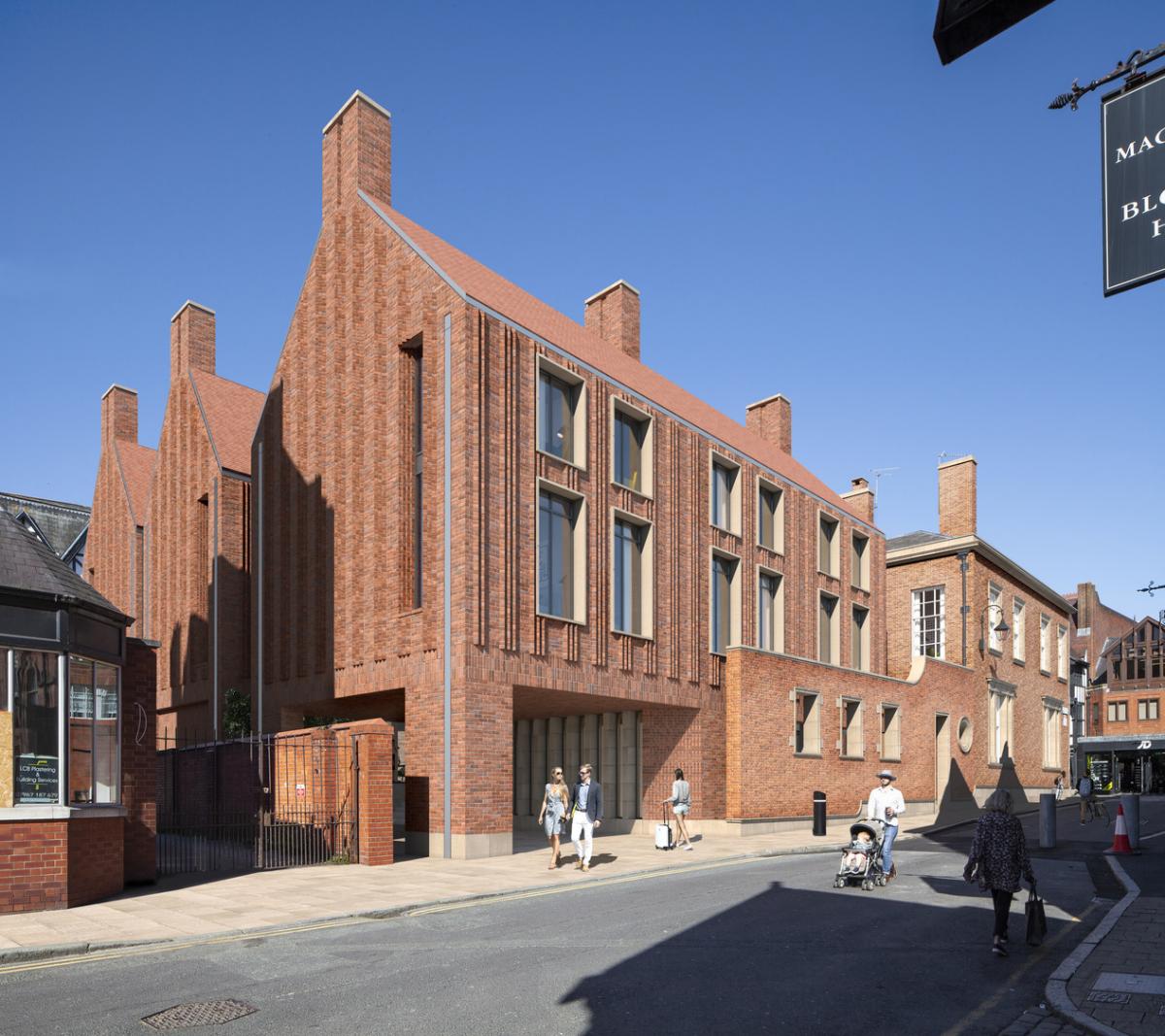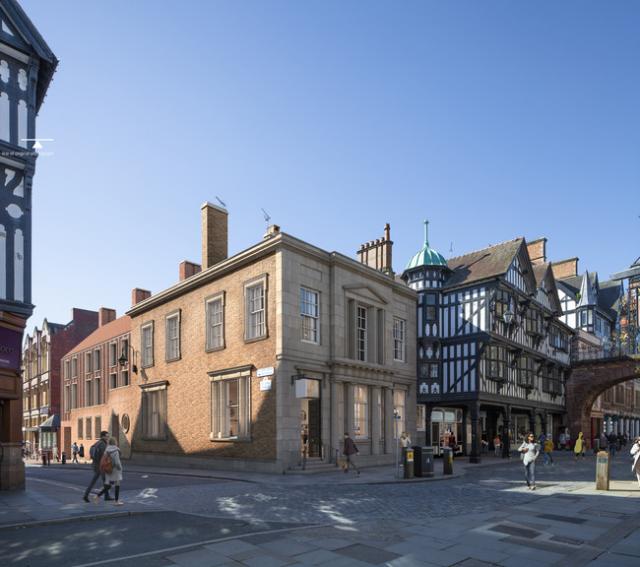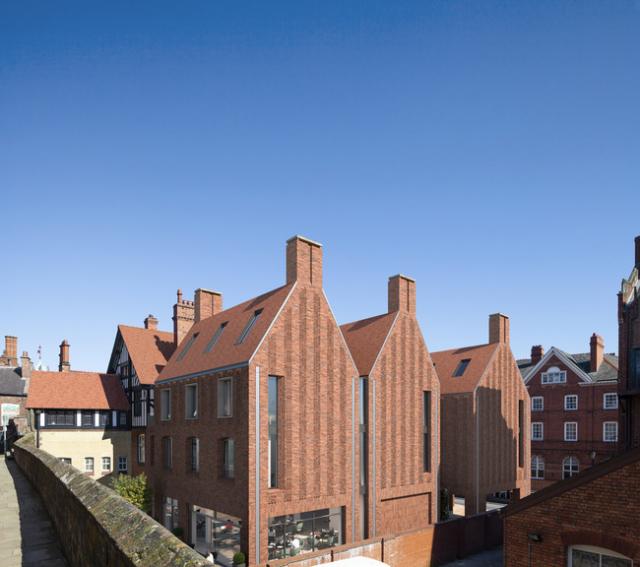
Chester is one of the UK’s most famous historic cities, famed for having the most complete city walls, the oldest racecourse, and the largest Roman Amphitheatre in the country.
We were appointed to create a new, high-quality hotel facility for local residents and visitors that would complement the city’s existing hospitality and leisure offer.
The site for hotel sits at the heart of Chester’s historic core and is located between three Grade I listed monuments, the Cathedral, the Roman Amphitheatre and sits alongside the city’s ancient defensive walls, which form the western edge of the site.
As such our response required a careful and considered approach that would complement the area’s existing buildings and enhance the conservation area setting.
Our designs compose of a number of different elements, combining new with old and knitting them together to create a high-quality and unique hospitality offer.


The proposals include the conversion of the site’s listed former bank building to house guest bedrooms over three floors. Internally, all sound historic fabric and features are retained and repaired to create characterful spaces and, where appropriate, any replacement materials are carefully sourced to match the existing.
At the rear of the building, a four-storey contemporary extension has been designed to house additional guest accommodation and the hotel’s restaurant and bar. The latter provides access to a terrace at the first-floor level and an external courtyard at the ground which will adjoin the city walls.
The extension has been carefully designed to be modest in scale and simple in form to complement the neighbouring historic building and the site’s conservation area setting. Consisting of three parallel pitched elements, separated by glazed links, each of the gabled blocks has been scaled to retain key city views. At the city wall elevation, the building has been stepped back to reveal elements of the surrounding heritage, including the bank building’s historic façade and the gable end of a neighbouring building.
A terracotta brick has been chosen for the extension to allow the building to blend with its surroundings. Taking reference from the black and white timber buildings across the city, the brickwork will feature a vertical brick corbelling detail which will create shadow and texture along the façade.
Retaining and reusing the existing building fabric has underpinned the sustainable approach to the design. The new extension uses energy-efficient mechanical services, combined with a highly insulated external fabric to provide a low-energy building. The building is also designed to achieve BREEAM ‘Very Good’ standards, which would place the scheme in the top 25 percent of refurbishment projects in the UK.
Image credits
CGIs by Ambiente
Martin Kirkpatrick
Martin is an experienced architect who has successfully delivered projects across a broad range of sectors, most recently specialising in hotels, multi-residential, mixed-use, and masterplanning work.
Tammy Welz
Tammy brings a passion for well-executed, beautiful and practical design to each project she is involved in, from hotel developments to city centre apartment schemes.
Prior to joining Buttress, Tammy spent three years in South Africa, where she worked for a practice that specialised in luxury family homes – an experience to which she credits her interest in the cultural and environmental influences on design outcomes.

